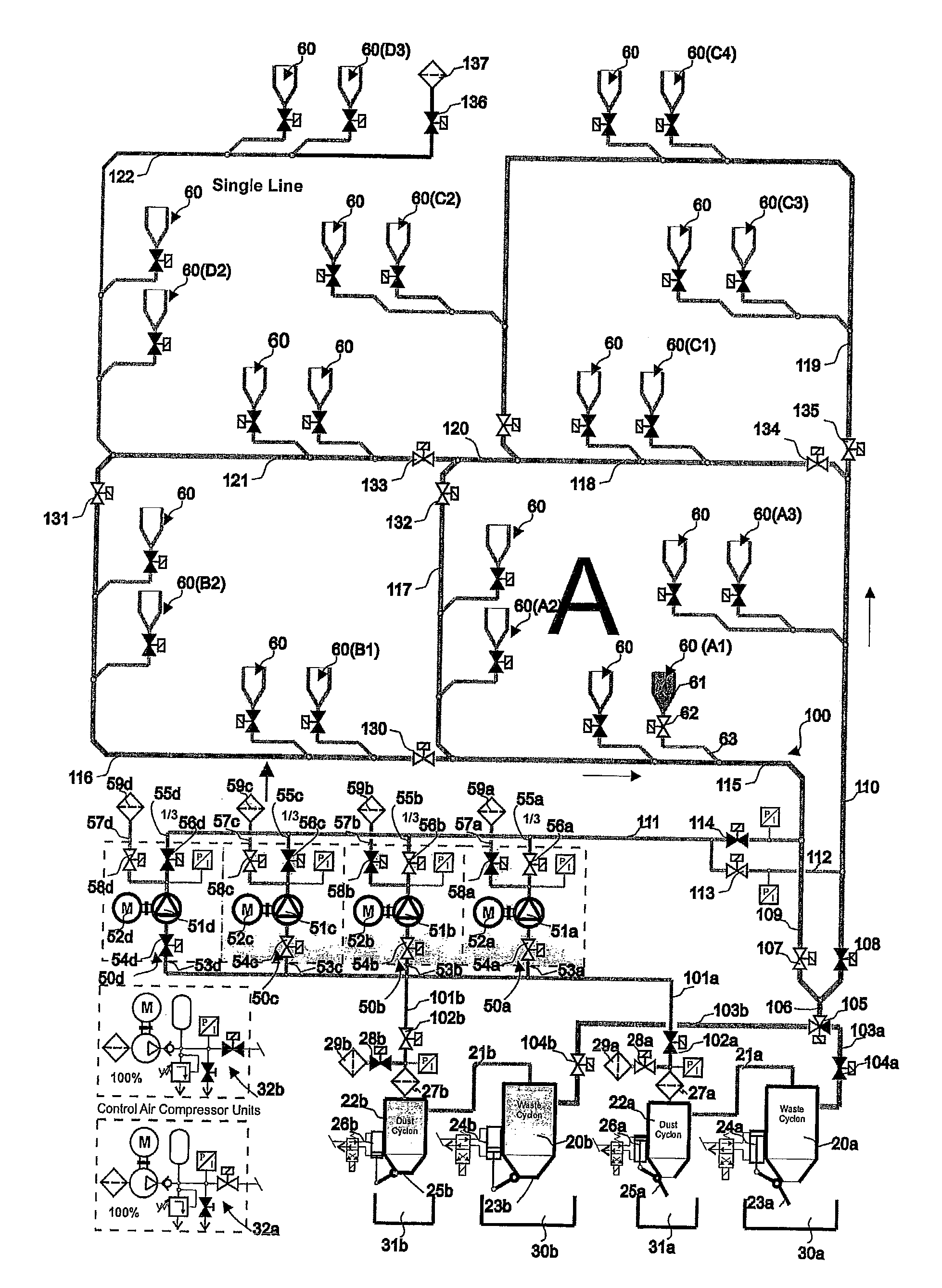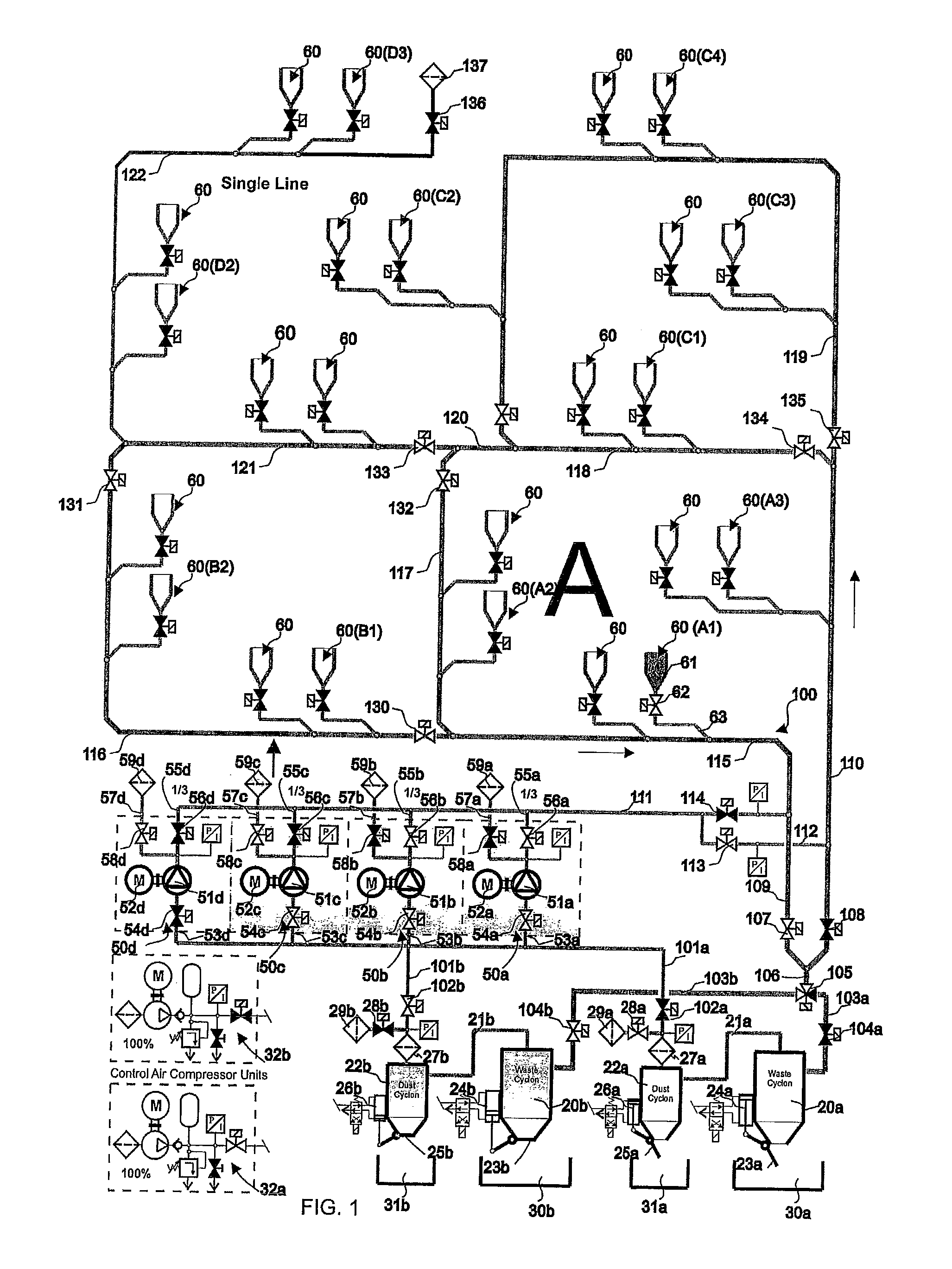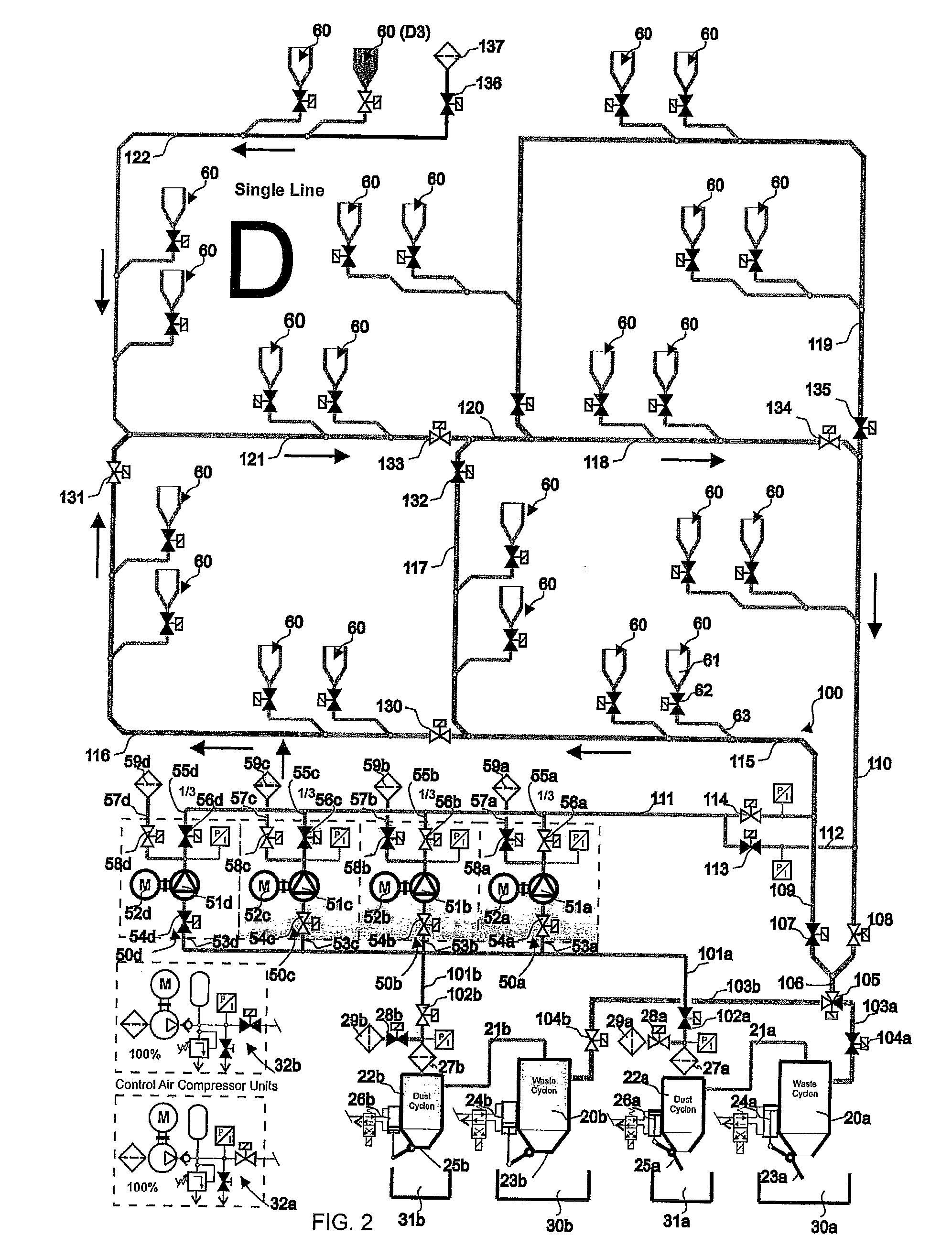[0011]The solution according to the invention has a number of significant advantages. By arranging at least a part of the piping in a circuit, in which the conveying air can be circulated, an effective conveying effect is achieved in the different parts of the transfer piping and also a fast transfer from the input pipe to the transfer pipe is achieved. By arranging the piping of the
system to comprise a circuit where at least a part of the conveying air circulates, the volume of outlet air can be decreased. At the same time the
energy consumption of the
system decreases. By maintaining a partial vacuum and, at the same time, blowing an effective circulation of conveying air can be achieved in the circuit and conveying of material in the transfer pipe. With the solution according to the invention a conventional so-called “
Single Line” system that comprises one transfer pipe can be efficiently combined with a solution in which at least a part of the transfer piping forms a circuit in which conveying air can be circulated, i.e. a Ring Line system. At the same time
total energy consumption can be made more efficient when at least a part of the conveying distance is performed in the transfer piping in which conveying air is circulated. This is a significant
advantage, particularly in large waste-conveying systems that cover e.g. a whole city district or city. The invention enables the use of smaller pipe diameters of the transfer piping in pipe sections that are connected at their second end to the transfer piping that forms a circuit but in which sections conveying air is not circulated, i.e. to a so-called “
Single Line” section. When using a system according to the embodiment of the invention, in which a system that utilizes the circulation of conveying air, i.e. a Ring Line system, and a transfer pipe section, in which conveying air is not circulated, i.e. a
Single Line system, connected to it are combined, an advantageous pressure loss situation is achieved.
[0012]When the Single Line and the Ring Line systems are connected, the Single Line pipe section can be selected to be smaller and the
diameter of the Ring Line pipe section, i.e. the pipe section in which conveying air can be circulated in the circuit, to be larger, if necessary. In this case some of the
air volume is sufficient to transfer wastes in the Single Line part of the piping to the Ring Line pipe section, i.e. to the pipe section that forms a circuit, in which conveying air can be circulated. The total power requirement decreases, in which case a considerable saving is achieved. Typically the saving is in the range of 30-50%. With the solution according to the invention, it is possible to essentially reduce the volume of outlet air and at the same time to reduce possible dust problems and fine particle problems in the outlet pipe. Furthermore, the
odor nuisances of transfer pipings typical to conventional pneumatic conveying systems of wastes can be reduced. According to the invention at least a part of the transfer piping can be connected as a part of a circuit in which the suction effect to be achieved with the pump devices can be adjusted and / or controlled and / or opened or closed with closing means / adjustment means, such as valve means, which are arranged in connection with the transfer piping. In this case suction can be efficiently circulated in the system even if the transfer piping of the system would not be a complete ring. At the same
time efficient conveying of material can be achieved in the piping. With the method and apparatus according to the invention it is possible to efficiently adjust the relationship of the air to be blown into the transfer piping and the air to be blown out of the system. With the solution according to the invention, the
noise problem caused by prior art can also be essentially reduced.
Moisture accumulated in the piping decreases and the piping can be dried by circulating air in the piping. When the air to be sucked in decreases, the use of energy also decreases. By opening and closing the input points of the system according to the invention, efficient transferring of material into the transfer pipe and conveying in the transfer pipe is achieved, while at the same time it is possible to keep the
noise impact caused by the operation of the system small. By arranging the transfer pipe of the materials moving system to be composed of operating areas, i.e. subcircuits, the conveying of material in the transfer piping and the emptying of input points into the transfer pipe can be effectively arranged. By arranging the conveying air circulation in the opposite direction an effective removal of clogging can be achieved. The change of the conveying air circulation into the other direction can be arranged easily in ring piping. Also the
total energy consumption decreases because, among other things, additional energy for
drying the piping, heating the piping, etc., is not needed.
 Login to View More
Login to View More  Login to View More
Login to View More 


